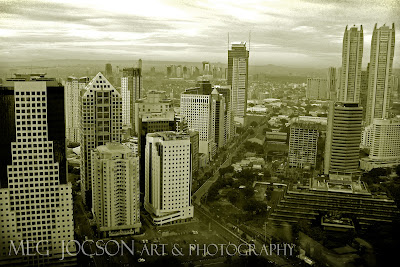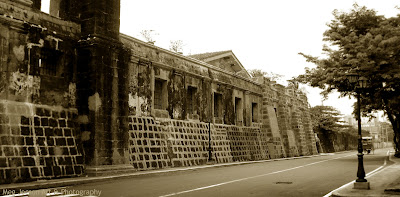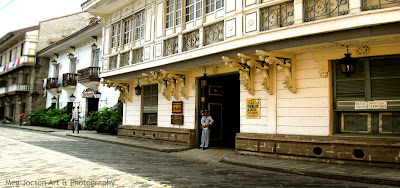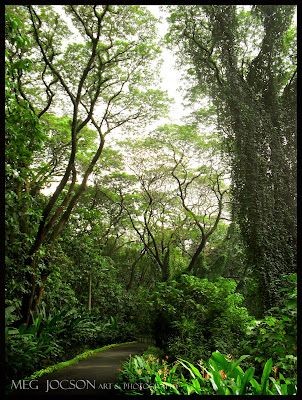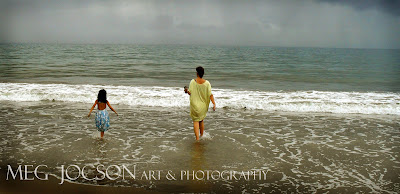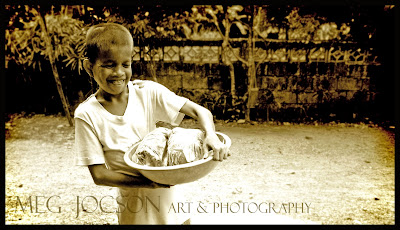When I was a child, my parents weren’t usually home. My dad was aboard a ship somewhere in the Mediterranean and my mother, who was still in the middle of her PHD’s, was either in Western Visayas or somewhere in Southeast Asia. My brother and I stayed with our aunt and grandmother.
We would usually leave home late in the morning, since the water would be really cold if we went there early, so getting sun burns were inevitable, since we stayed there until late in the afternoon.
Now the most tiring part was the walk home. It seemed to take ten times longer than it should. And when we finally got home, my brother and I would fall asleep from exhaustion. I remember lying down, still feeling the water current all over my body and that feeling went on until my grandmother woke us up for dinner.
When I turned ten, my mother earned her PHD’s and stayed home to look after us. And then we began to live differently. We had someone else do the laundry for us, instead of my grandmother, which meant that we wouldn’t have the chance to go to the river anymore. And when I turned twelve, we started going places, and we were rarely home.
But even after fifteen years, I can still remember the river’s current on my body and the sun’s burning rays on my skin as I bathed. I have somehow come to realize that Daguitan’s waters have made it’s way to my bloodstream and have stayed ever since.
Just yesterday, I decided to go back to the river, where I spent the happiest days of my childhood. The river has changed its course. The cliff we used to jump off from, as a child was no longer in sight. The old edges of the river were still visible but the river has moved about thirty meters away.
As I neared the water, I felt the rush of excitement that I felt as a child. I took off my rubber boots and ran into the water. As the water hugged my feet, I felt like I did years ago. I felt rejuvenated. I felt that the child in me was always waiting for this feeling.
During weekdays my brother and I, together with our aunt would stay at a house we rented, close to our school in the main town of Dulag, which was a few miles from our home. During weekends we’d travel back home to be with our grandmother.
 |
| A "kubo" by the river. |
We always looked forward to the weekend. It was a couple worry-free days of just playing and bathing in the river or frolicking by the beach. Our permanent hangout place was Daguitan river.
Daguitan river was a few minutes walk from our home. The walk going to the river was quick and easy, because of the excitement. And when we got there, we swam and jumped off a cliff to the river again and again. My grandmother was always at a close watch, as she did the laundry.
We would usually leave home late in the morning, since the water would be really cold if we went there early, so getting sun burns were inevitable, since we stayed there until late in the afternoon.
Now the most tiring part was the walk home. It seemed to take ten times longer than it should. And when we finally got home, my brother and I would fall asleep from exhaustion. I remember lying down, still feeling the water current all over my body and that feeling went on until my grandmother woke us up for dinner.
 |
| The road to the river. |
When I turned ten, my mother earned her PHD’s and stayed home to look after us. And then we began to live differently. We had someone else do the laundry for us, instead of my grandmother, which meant that we wouldn’t have the chance to go to the river anymore. And when I turned twelve, we started going places, and we were rarely home.
But even after fifteen years, I can still remember the river’s current on my body and the sun’s burning rays on my skin as I bathed. I have somehow come to realize that Daguitan’s waters have made it’s way to my bloodstream and have stayed ever since.
 |
| Best photo of the trip. |
Just yesterday, I decided to go back to the river, where I spent the happiest days of my childhood. The river has changed its course. The cliff we used to jump off from, as a child was no longer in sight. The old edges of the river were still visible but the river has moved about thirty meters away.
As I neared the water, I felt the rush of excitement that I felt as a child. I took off my rubber boots and ran into the water. As the water hugged my feet, I felt like I did years ago. I felt rejuvenated. I felt that the child in me was always waiting for this feeling.
















